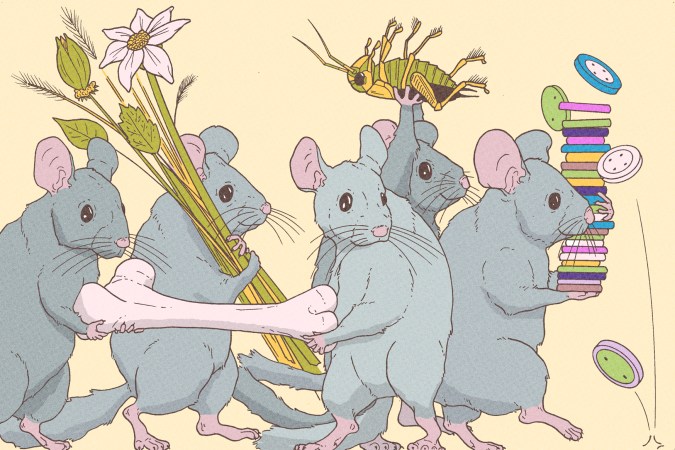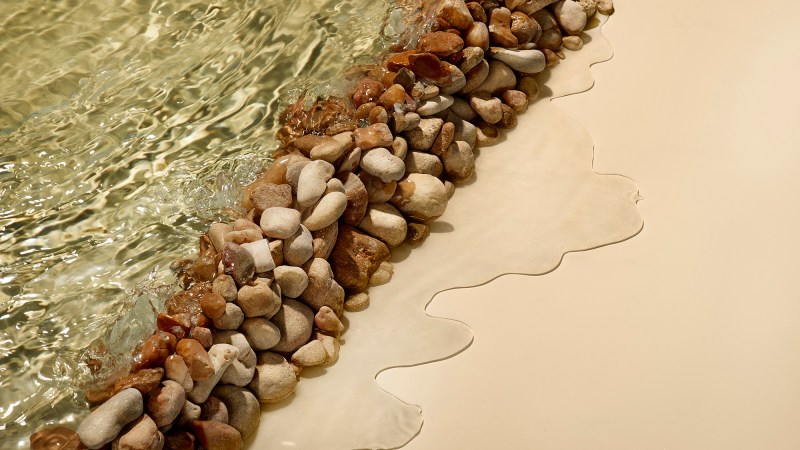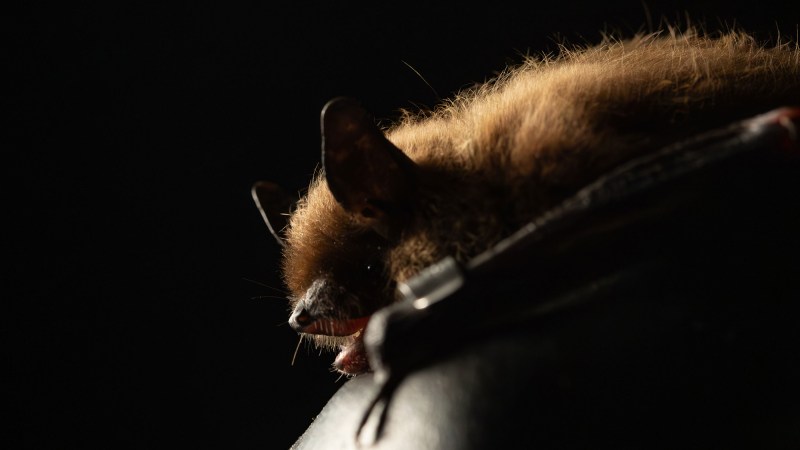

Humans fare poorly after having their heads chopped off, but for some trees losing their tops just means the opening of a second act.
Foresters have long marveled at so-called living stumps, tree remnants that manage to stay hydrated and nourished despite losing their leaves, branches, and trunks. These undead relics sometimes inspire comparisons to zombies, but recent results suggest that vampirism might be a more apt metaphor. A team of New Zealand ecologists have determined that at least one vivacious hunk of wood staves off death by literally sapping its neighbors’ lifeforce through a shared underground root network. The phenomenon, should it prove widespread, could complicate local conservation efforts, and contributes to an emerging debate about whether trees are individuals or parts of something much bigger.
“Is a forest really a communal organization, like ants and termites?” asks Sebastian Leuzinger, an ecologist at the Auckland University of Technology and coauthor of the study, published today in the journal iScience. “We need to rethink trees and forests if they’re superorganisms.”
Leuzinger and his colleague stumbled across the knee-high chunk of timber while hiking west of Auckland. It wouldn’t impress most people (Leuzinger estimates hundreds of thousands of people have walked by it), but the kauri stump’s bulbous growths immediately caught the ecologist’s attention. “We looked at the stump and it clearly looked like it had live tissue,” he says. “Immediately the question comes up, why would a tree be alive without any foliage?”
To find out, the duo returned and stuck both the stump and the two nearest kauri trees with bunches of needles that measured sap flow. For 11 days straight, they found that water moved through the three organisms in a synchronized pattern. During the day, while lots of water moved up into the trees to replace fluids lost during photosynthesis, the stump stayed thirsty. But at night, while the trees mostly held onto their liquid, the stump sipped modest amounts of sap. The same inverse relationship—that sap circulated through the stump only while its neighbors sat inactive—even held during a rainstorm (which disrupts photosynthesis), leading the team to an unmistakable conclusion: the stump was leeching water, along with the foodstuff inside, from the surrounding trees.

“It really suggests that it’s all one massive mass of roots,” Leuzinger says, “exchanging water, nutrients, and carbon in all directions.” There’s already reason to suspect that this kind of network would be possible. When rocky soil crowds roots into the same area, they can fuse together—a process called root grafting. But no one had caught the melded roots in the act of conducting water between trees before, according to Leuzinger. The researchers suspect the kauri stump joined up with its neighbors while still whole, creating an extensive root network that may have kept all three trees watered and upright in a win-win-win situation. At some point, however, one tree suffered an unknown trauma and what remained underwent a complete transformation, rewiring its water transport systems to live entirely off the charity of its neighbors. Now, why the remaining trees support the freeloading stump is anyone’s guess.
“The romantic thing would be to say they look after their grandfather and keep it alive,” Leuzinger says. “Or maybe they’re just unable to cut off this particular parasite.”
As the first measurement of tree-to-tree water exchange, the research advances an emerging understanding of how trees link up to create social safety nets. Researchers showed in 1997 that mycorrhizal fungi in the soil were transferring carbon between seedlings, and then in 2016 another team discovered that trees were sharing huge quantities of carbon, with as much as 40 percent of the carbon in their fine roots coming from somewhere else. These fungal resource-sharing networks, which botanists have collectively dubbed the “wood wide web,” appear to be a global phenomenon, according to research published earlier this year. While the fungi serve as liaisons between different species, root-to-root grafting represents a way trees of the same species can work together directly.
“It’s a beautiful study,” says Tamir Klein, a tree researcher at the Weizmann Institute of Science in Israel and collaborator on the 2016 mycorrhizal investigation. “I wish I could have done it myself.” He’s observed root grafting and living stumps in drier Israeli forests too, suggesting the strategy isn’t limited to New Zealand’s kauri trees. However, he says the sap flow measurements offer only indirect evidence of water sharing, and can’t conclusively rule out the possibility of improbably timed absorption through the soil. Klein’s team is currently dousing a living stump with scarlet dye in the hopes of seeing to what degree nearby trees turn pink, a more conclusive sign of sap sharing.

Leuzinger also seeks more direct evidence of what exactly the trees are doing underground. If hikers and foresters can help locate more local examples of living stumps, he plans to return with an air spade, an industrial-strength hair dryer that can blow away soil and harmlessly expose a tree’s root structure. Actually seeing the underground network would let him study its size and architecture.
The big question is whether these death-defying partnerships arise sporadically between small stands of trees or extend throughout entire forests. The latter would bring mixed news for conservationists. Extensive water sharing could make forests more drought-resistant, but swapping sap is also a great way to get sick. A fungus-like organism currently threatens New Zealand’s forests with kauri dieback disease, and if water sharing is the root of the problem then closing hiking trails and washing contaminated boots won’t help. “It looks a bit grim,” Leuzinger says, “but again that’s speculation.”
Such practical concerns also strike at more fundamental concepts. Boot washing treats trees as individuals to be quarantined, but rampant root grafting would render that concept flawed. “If they are no longer individuals,” Klein says, “then we have to consider the forest as one unit.”
Only through further stump work will researchers be able to dig up solid answers. “We have a lot of ideas of what to follow up on,” Leuzinger says, “but really we’ve asked more questions than we’ve answered.”






